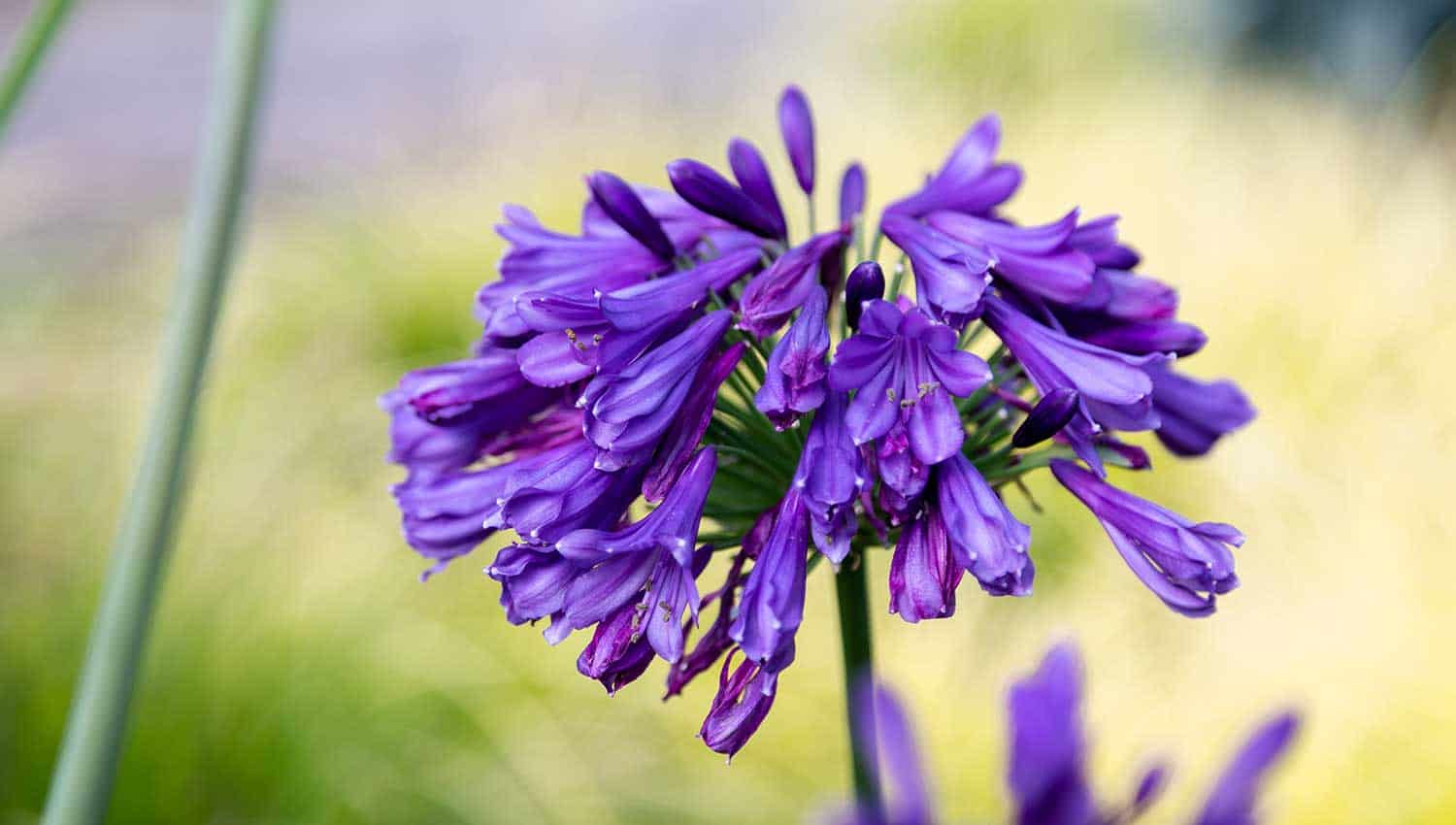Releasing the Secret to Successful Agapanthus Farming: Tips and Techniques for a Flourishing Garden
In the realm of gardening, cultivating agapanthus efficiently requires a tactical strategy that incorporates various aspects of plant treatment. With cautious focus to information, one can unlock the tricks to nurturing these stunning blooms, resulting in a yard that flourishes with charm and vibrancy. By comprehending the subtleties of agapanthus growing, one can develop an environment where these plants grow and bloom generously. In the adhering to discussion, we will check out crucial ideas and methods that will assist you towards a growing agapanthus garden, providing insights into best methods, soil conditions, sprinkling techniques, and a lot more.
Growing Agapanthus: Best Practices
When planting Agapanthus, proper soil prep work is necessary for making sure successful growth and growth of these stunning blossoms. Agapanthus, typically called Lily of the Nile or African lily, prospers in well-draining soil with a somewhat acidic to neutral pH level - Agapanthus. Before planting, it is vital to modify heavy clay soils with natural matter such as garden compost or peat moss to improve drainage and provide vital nutrients for the plants
To plant Agapanthus, select an area that obtains complete sunshine to partial shade, as this will promote healthy growth and bountiful blooming. Dig an opening twice the size of the plant's root ball and place the Agapanthus at the very same deepness it was formerly growing. Carefully backfill the opening with soil, weighing down strongly to get rid of any type of air pockets around the origins.
Water the freshly planted Agapanthus completely and proceed to keep the dirt equally wet, particularly throughout the plant's active expanding period. Agapanthus. Using a well balanced fertilizer once a month can better support the plant's development and flowering. By adhering to these best techniques for growing Agapanthus, you can produce a sensational display screen of these captivating flowers in your yard
Perfect Dirt Conditions for Agapanthus
For optimal growth and growing success of Agapanthus plants, making sure the soil conditions are suitable is crucial. Agapanthus flourishes in well-draining soil with a somewhat acidic to neutral pH degree varying from 6.0 to 7.0. This sort of dirt enables appropriate water drainage, avoiding waterlogging which can result in root rot. To enhance dirt drainage, consider adding raw material such as garden compost or peat moss when preparing the planting website. Moreover, Agapanthus favors soil that is abundant in nutrients, so including a balanced fertilizer during the expanding season can advertise healthy growth and vivid blossoms.

Watering and Fertilizing Tips
To make certain healthy growth and vivid flowers, correct watering and fertilizing techniques are important for effective Agapanthus cultivation. Agapanthus plants profit from routine watering, particularly during directory the growing season.
When it concerns fertilizing Agapanthus, a balanced fertilizer with equivalent parts nitrogen, phosphorus, and potassium can be used in the spring to promote healthy growth and blooming. Slow-release plant foods are excellent for supplying nutrients slowly over a prolonged duration. Avoid over-fertilizing, as this can lead to too much foliage growth at the expense of blossoms.
Additionally, incorporating raw material like garden compost right into the dirt can enhance nutrient degrees and improve dirt framework, aiding in the general wellness of the Agapanthus plants. By following these watering and fertilizing suggestions, garden enthusiasts can guarantee their Agapanthus plants prosper and create spectacular displays of blossoms.
Trimming and Deadheading Strategies
Appropriate pruning and deadheading methods play a critical function in keeping the health great post to read and wellness and visual appeals of Agapanthus plants, complementing the essential practices of watering and fertilizing for successful farming. Pruning Agapanthus includes eliminating invested flower heads, yellowing or dead fallen leaves, and overall shaping of the plant to advertise better development. Deadheading, the procedure of eliminating faded flowers, not only boosts the plant's appearance however additionally encourages additional growing.
When deadheading Agapanthus, it is suggested to clip off the flower stem at the base making use of sharp, tidy shears. This procedure redirects the plant's power from seed production back into root and foliage growth, promoting a healthier and extra durable plant. Regular deadheading can expand the growing duration of Agapanthus and protect against self-seeding, which can lead to congestion.
In terms of pruning, Agapanthus generally advantages from a light trim after flowering to clean up the plant and urge fresh development. Cutting down the invested flower stems and getting rid of any type of dead or damaged vegetation helps keep the plant's vigor and total appearance. However, it is necessary to avoid reducing right into the crown of the plant, as this can compromise its health and wellness.

Protecting Agapanthus From Pests and Diseases
Applying reliable bug and disease administration methods is important to protecting the health and vigor of Agapanthus plants in cultivation. One typical insect see post that impacts Agapanthus is the Agapanthus borer, a caterpillar that passages right into the plant, causing damage to the fallen leaves and flowers.
Along with parasites, Agapanthus are at risk to conditions such as origin rot and fungal fallen leave places. These concerns can commonly be stopped by making sure proper drainage and avoiding overwatering. If indications of condition appear, impacted components of the plant should be without delay eliminated to stop more spread. Fungicides may likewise be utilized as a treatment procedure, complying with the producer's instructions carefully. By staying vigilant and dealing with insect and condition concerns promptly, gardeners can aid their Agapanthus prosper and grow.

Final Thought
Finally, effective farming of agapanthus calls for appropriate planting methods, optimal dirt conditions, ample watering and fertilizing, normal trimming and deadheading, and defense from pests and conditions. By adhering to these tricks and pointers, garden enthusiasts can ensure a flourishing yard loaded with attractive agapanthus blossoms. Agapanthus. Keep in mind to preserve constant treatment and attention to detail to promote the health and longevity of these magnificent plants
When growing Agapanthus, appropriate dirt prep work is essential for guaranteeing successful growth and development of these gorgeous blossoms.Water the recently grown Agapanthus extensively and continue to maintain the dirt evenly moist, especially throughout the plant's energetic expanding period.For ideal growth and growing success of Agapanthus plants, ensuring the dirt problems are suitable is critical. When hair transplanting or planting Agapanthus, make sure the dirt is well-prepared to supply the needed foundation for the plants to develop themselves successfully. One typical pest that affects Agapanthus is the Agapanthus borer, a caterpillar that tunnels right into the plant, creating damage to the flowers and leaves.
 Neve Campbell Then & Now!
Neve Campbell Then & Now! Jason J. Richter Then & Now!
Jason J. Richter Then & Now! Tyra Banks Then & Now!
Tyra Banks Then & Now! Daryl Hannah Then & Now!
Daryl Hannah Then & Now! Heather Locklear Then & Now!
Heather Locklear Then & Now!